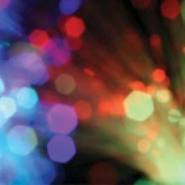Vedantic Wednesday: Atman and Brahman – First Part
Advaita Vedanta establishes the relationship between Atman and Brahman by reasoning what we observe as two separate  entities is pure illusion. There are two references or examples that are often quoted in the Advaita philosophy that can explain this stand point. Here is the first one.
entities is pure illusion. There are two references or examples that are often quoted in the Advaita philosophy that can explain this stand point. Here is the first one.
Light is bright and as such colorless. But when it passes through a black glass it appears dark and dull. In a similar fashion when light refracted through the blue glass produces a brilliant and bright color. Just as the light’s black and blue tints are occasioned by their respective conditionings, so too the Sat-Cit-Ananda principle seems to acquire its properties from the qualifying microcosmic and macrocosmic conditionings respectively.
If we remove the blue and the black tinted sheets, there will be only one luminous light source, in a similar manner from the conditioning of the microcosm and macrocosm, the jiva (similar to the dull black light) and the Isvara (similar to brilliant blue light) appear different, but bereft of these two conditionings what is left is the pure Sat-Cit-Ananda principle – call it Atman or Brahman as you please. The appellation does not matter. Advaita hails that luminous light source as the unifying single constant.





